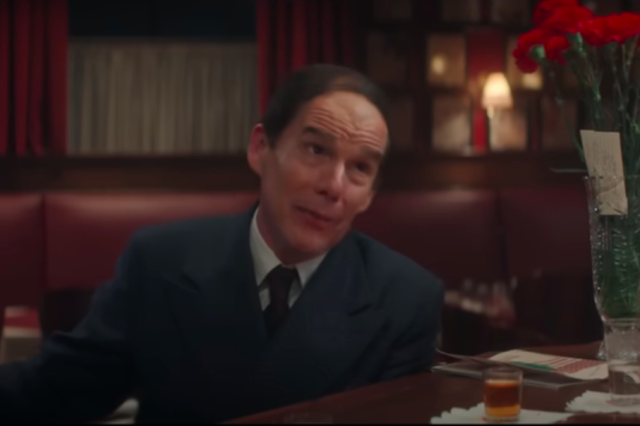
(Photo © Chris Bennion)
For some strange reason, Hairspray has come in for criticism by such disparate musical theater writers as the late Fred Ebb and the very much alive Michael John LaChiusa — the former in remarks quoted in the book Colored Lights, the latter in a controversial article in the August 2005 edition of Opera News. Perhaps the reason isn’t so strange after all and amounts to little more than jealousy on the part of the great Ebb, who was unable to get a new show produced on Broadway during the last decade or so of his life, and LaChiusa, whose still young but prolific career has yet to yield a musical even remotely as popular or successful as what composer Marc Shaiman, lyricists Shaiman and Scott Wittman, and book authors Mark O’Donnell and Thomas Meehan have wrought in Hairspray.
The reservations of Ebb and LaChiusa notwithstanding, Hairspray is a fabulously tuneful, bright, funny, early ’60s pastiche musical with a message. Based on the hit film by John Waters, it tells of hefty Baltimore teenager Tracy Turnblad’s attempt to racially integrate The Corny Collins Show, a TV dance program that she and her friends live to watch. Along the way, Tracy wins the heart of Link Larkin, the show’s reigning heartthrob; she also earns the respect of her devoted parents, Edna and Wilbur Turnblad, not to mention the admiration of the entire city.
A recent performance of the national touring production of Hairspray at the gorgeously renovated Opera House in Boston proved once again that audiences adore this show. As I headed up the aisle during intermission, I overheard a fellow behind me say to his wife: “Wow, I can’t believe the first act was an hour and a half long. It went by so quickly!” I had the same feeling. Aside from its brilliantly witty book, Act I of Hairspray boasts a kick-ass opening number in “Good Morning Baltimore” (love that “aerial shot” of Tracy in bed!), followed by such winners as “Mama, I’m a Big Girl Now” and the show-stopping “Welcome to the ’60s.” Act II gives us the hilarious women’s prison number “Big Dollhouse,” the priceless Edna/Wilbur duet “Timeless to Me,” and “You Can’t Stop the Beat,” an aptly titled finale that all but blows the roof off of the theater.
Hairspray is such a well crafted show that it goes over like gangbusters even when less than perfectly cast. This was the case in the tour’s matinee performance on Saturday, October 15, which featured understudies in three (!) of the leading roles: Tracy, Motormouth Maybelle, and Seaweed. Though Christine Danielson gave a thoroughly professional, committed, energetic performance as superteen Tracy, her sweet-toned singing voice seemed wrong for the part; I found myself missing the far less pretty but much more pointed, period-specific sound of Marissa Jaret Winokur, who created the role on Broadway. Jacqueline B. Arnold seemed a bit too young and glamorous for Motormouth but sang her songs spectacularly well, capping “I Know Where I’ve Been” with a thrilling high note. Steven Cutts, new to the company and to the role of Seaweed, was a total charmer — especially in “Run and Tell That.”
J.P. Dougherty, who has recently taken over the drag role of Edna, seems a bit bland in a part that requires the outlandish comic presence of a Harvey Fierstein or a Bruce Vilanch. In look, sound, and mannerisms, he comes across as a plus-size Gary Beach — genial and amusing but not riotously funny as Fierstein was in the part. (It wasn’t lost on me, and can’t be lost on Dougherty, that he gets his biggest laughs in Hairspray when he apes Harvey’s famous raspy basso-profundo delivery of two or three lines.)
The rest of the show’s leads are terrific, most notably Link Larkin, played by a super-talented cutie with the rather unfortunate name of Aaron Tveit. Also adorable is Caissie Levy as Tracy’s loyal friend Penny Pingleton. Though Jim J. Bullock may not be 100% believable in the role of the presumably heterosexual Wilbur Turnblad (as one of Boston’s gay rags took pains to point out), his portrayal is wonderfully warm and funny — and he has great chemistry with Dougherty.
David Rockwell’s sets have been scaled down for the tour, but not significantly so; that bright, colorful, ’60s-style light wall remains, and it still creates an exciting effect. (Bravo to lighting designer Kenneth Posner.) William Ivey Long’s costumes are sheer bliss, as is Jerry Mitchell’s choreography. I suppose it’s unlikely that Mitchell or director Jack O’Brien have personally brushed up this long-running production in recent weeks or months, but they can rest assured that the show is in great shape. It sure bowled ’em over in Boston and will undoubtedly continue to do so as the tour continues.







